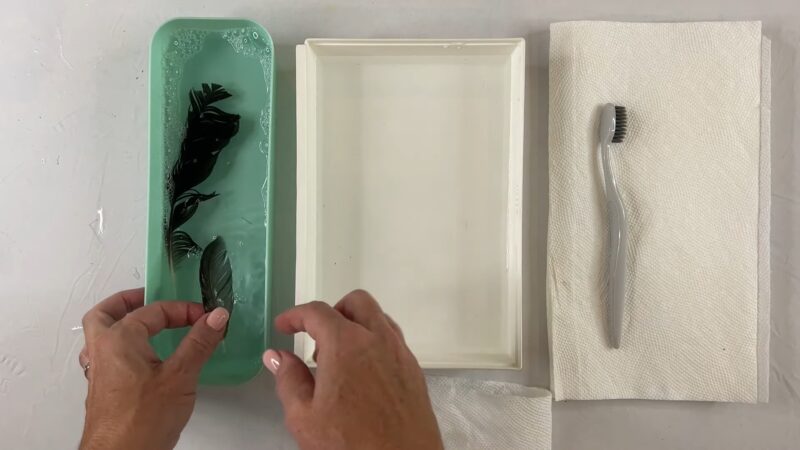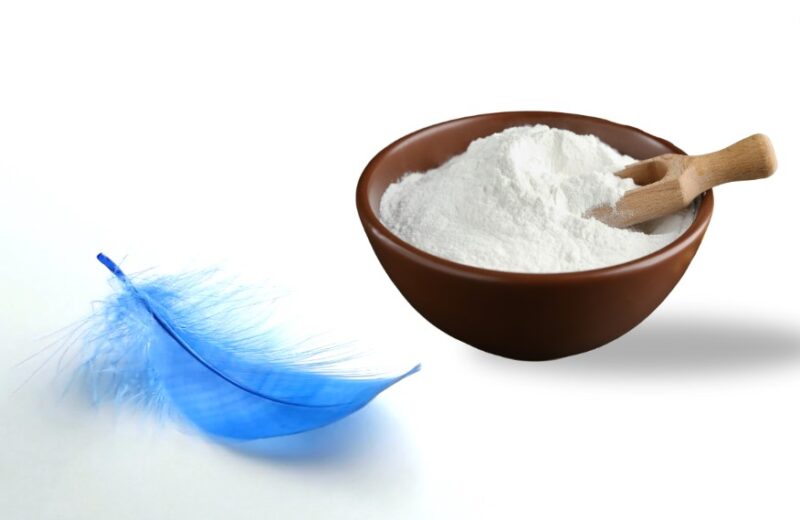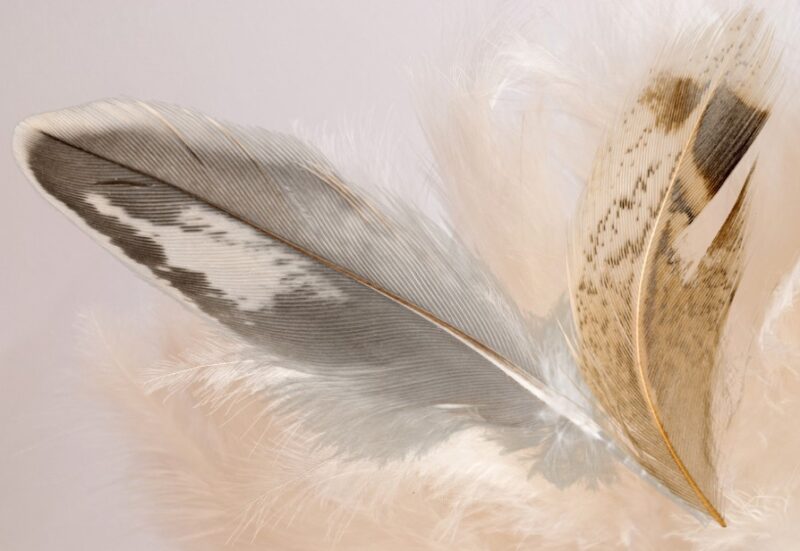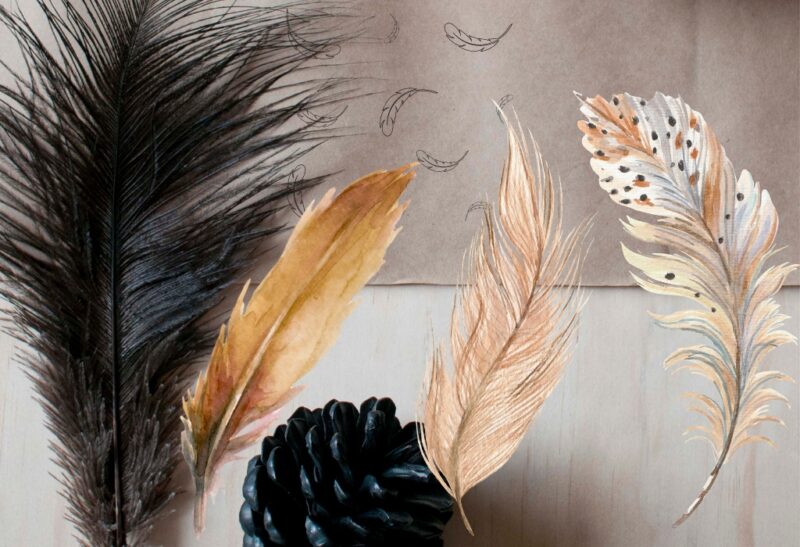Feathers have been used for centuries in crafts and fashion, adding a unique touch of elegance and beauty to various projects. Whether you’re using feathers for home décor, jewelry, or costume design, it’s crucial to know how to clean them properly to maintain their natural appearance and ensure their longevity.
In this comprehensive guide, we will discuss the importance of cleaning feathers for crafts, the various cleaning methods, and the best practices for preserving them for future use.
The Importance of Cleaning Feathers for Crafts
Feathers, whether collected from the wild or purchased from a store, may carry dirt, debris, and even microscopic parasites. Cleaning feathers not only helps to remove these unwanted elements but also restores their natural beauty and shine. Properly cleaned feathers are more comfortable to work with and produce better results in your craft projects.
Types of Feathers Used in Crafts
Before we dive into the cleaning process, it’s essential to understand the different types of feathers commonly used in crafts:
- Contour Feathers: These are the most common type of feathers, found on the bird’s body. They have a central shaft (or quill) and a flat vane with interlocking barbs.
- Down Feathers: These are small, fluffy feathers found beneath the contour feathers. They are incredibly soft and are typically used for stuffing or as accents in craft projects.
- Flight Feathers: These feathers are found on the bird’s wings and have a strong, rigid quill to support the bird during flight. They are often used in crafts for their unique shape and durability.
- Tail Feathers: These feathers are similar to flight feathers but are found on the bird’s tail. They are used for their distinct shape and patterns.
Now that you are familiar with the different types of feathers let’s discuss the various methods of cleaning them.
Method 1: Cleaning Feathers with Soap and Water

This method is suitable for most feathers, including contour, flight, and tail feathers.
Materials:
- Mild dish soap
- Warm water
- Clean towels or paper towels
- Soft-bristled toothbrush (optional)
Instructions:
- Fill a basin or sink with warm water and add a few drops of mild dish soap. Gently mix the water to create suds.
- Place the feathers in the soapy water, ensuring they are fully submerged. Allow them to soak for a few minutes to loosen any dirt or debris.
- Gently swish the feathers in the water to help remove any dirt. If necessary, use a soft-bristled toothbrush to gently scrub any stubborn debris from the quill and barbs.
- Rinse the feathers under cool, running water to remove all soap residue.
- Lay the feathers flat on clean towels or paper towels and gently pat them dry. Avoid rubbing the feathers, as this can cause damage.
- Allow the feathers to air dry completely before using them in your crafts.
Method 2: Cleaning Feathers with Cornstarch

This method is best for delicate or down feathers that may be damaged by water.
Materials:
- Cornstarch
- A soft brush or cloth
- A container with a lid (optional)
Instructions:
- Lay the feathers out on a clean, flat surface.
- Sprinkle a generous amount of cornstarch over the feathers, ensuring they are completely covered.
- If using a container, place the feathers and cornstarch inside, close the lid, and gently shake to coat the feathers evenly.
- Let the feathers sit for 10-15 minutes, allowing the cornstarch to absorb any dirt, oils, or odors.
- Use a soft brush or cloth to gently brush away the excess cornstarch from the feathers. Be gentle, especially with delicate down feathers, to avoid causing damage.
- Once the cornstarch is removed, inspect the feathers to ensure they are clean. If necessary, repeat the process until the feathers are free from dirt and debris.
- Allow the feathers to air dry completely before using them in your crafts.
Method 3: Cleaning Feathers with Steam
This method is suitable for feathers that have lost their shape or need to be sanitized. It is especially useful for contour, flight, and tail feathers.
Materials:
- A steamer or steam iron
- Clean towels or paper towels
- Tongs or a heat-proof glove
Instructions:
- Fill your steamer or steam iron with water and heat it according to the manufacturer’s instructions.
- Lay the feathers flat on clean towels or paper towels, ensuring they are free from any dirt or debris.
- Once the steamer or steam iron is ready, hold the feather by the quill using tongs or a heat-proof glove.
- Gently pass the feather through the steam, making sure the steam penetrates the barbs. Be careful not to hold the feather too close to the steamer or steam iron, as this can cause damage.
- As you steam the feather, use your fingers or a clean cloth to gently reshape the barbs and remove any kinks.
- Allow the feathers to air dry completely before using them in your crafts.
Best Practices for Storing and Preserving Feathers

Proper storage and preservation of feathers are crucial to maintaining their quality and appearance. Here are some tips for keeping your cleaned feathers in the best condition:
- Store feathers in a cool, dry place away from direct sunlight, as sunlight can cause the colors to fade.
- Keep feathers in a sealed container or plastic bag to protect them from dust and moisture.
- Avoid storing feathers with mothballs or other chemical repellents, as these can damage the feathers.
- To preserve the shape of the feathers, consider storing them in acid-free tissue paper or a soft cloth.
- Regularly inspect your stored feathers for any signs of mold, mildew, or insect infestation, and address any issues promptly.
FAQ
Can I use a hairdryer to speed up the drying process of cleaned feathers?
While it may be tempting to use a hairdryer to expedite the drying process, it is not recommended. High heat can damage the feathers, causing them to become brittle or lose their shape. It is best to let the feathers air dry naturally in a well-ventilated area.
How often should I clean my feathers?
The frequency of cleaning depends on the intended use of the feathers and the environment in which they are stored. If the feathers are used for crafts and decorations that are exposed to dust and dirt, it is advisable to clean them every few months. However, if the feathers are stored in a sealed container or protected from dust, cleaning them once a year should suffice.
Can I use household cleaners or detergents to clean feathers?
It is generally not recommended to use harsh chemicals or detergents on feathers, as they can cause damage to the delicate barbs and quill. Instead, opt for gentle cleaning methods like those outlined in this guide, using mild soaps or cornstarch.
Are there any specific types of feathers that require special care during cleaning?
Delicate down feathers and feathers with intricate patterns or colors may require extra care during the cleaning process. Be gentle when handling these feathers and avoid using excessive force, which could damage their structure. Additionally, avoid using any cleaning methods that could potentially cause colors to bleed or fade.
How can I restore the natural oils in feathers after cleaning?
Feathers have natural oils that help maintain their shape and luster. While some of these oils may be removed during the cleaning process, they will gradually be restored as the feathers are exposed to air. You can also gently run your fingers along the barbs of the feathers after they are dry to help redistribute any remaining oils.
Can I use dyed or treated feathers in my crafts?
Yes, you can use dyed or treated feathers in your crafts. However, it is essential to ensure that the dyes or treatments used are non-toxic and safe for your intended purpose. Keep in mind that dyed feathers may require special care during cleaning to prevent color bleeding or fading.
How can I prevent mold and mildew from forming on stored feathers?
To prevent mold and mildew growth, store your feathers in a cool, dry place and use airtight containers or sealed plastic bags for storage. Check the feathers periodically for any signs of moisture or fungal growth, and address any issues promptly to prevent damage to the feathers.
Conclusion
Cleaning and preserving feathers for crafts is a crucial process to maintain their beauty and durability. By following the methods and best practices outlined in this comprehensive guide, you can ensure that your feathers remain in excellent condition for all of your creative projects.
Whether you’re using feathers for home décor, fashion accessories, or costume design, properly cleaned and cared-for feathers will elevate your craftwork to new heights.







